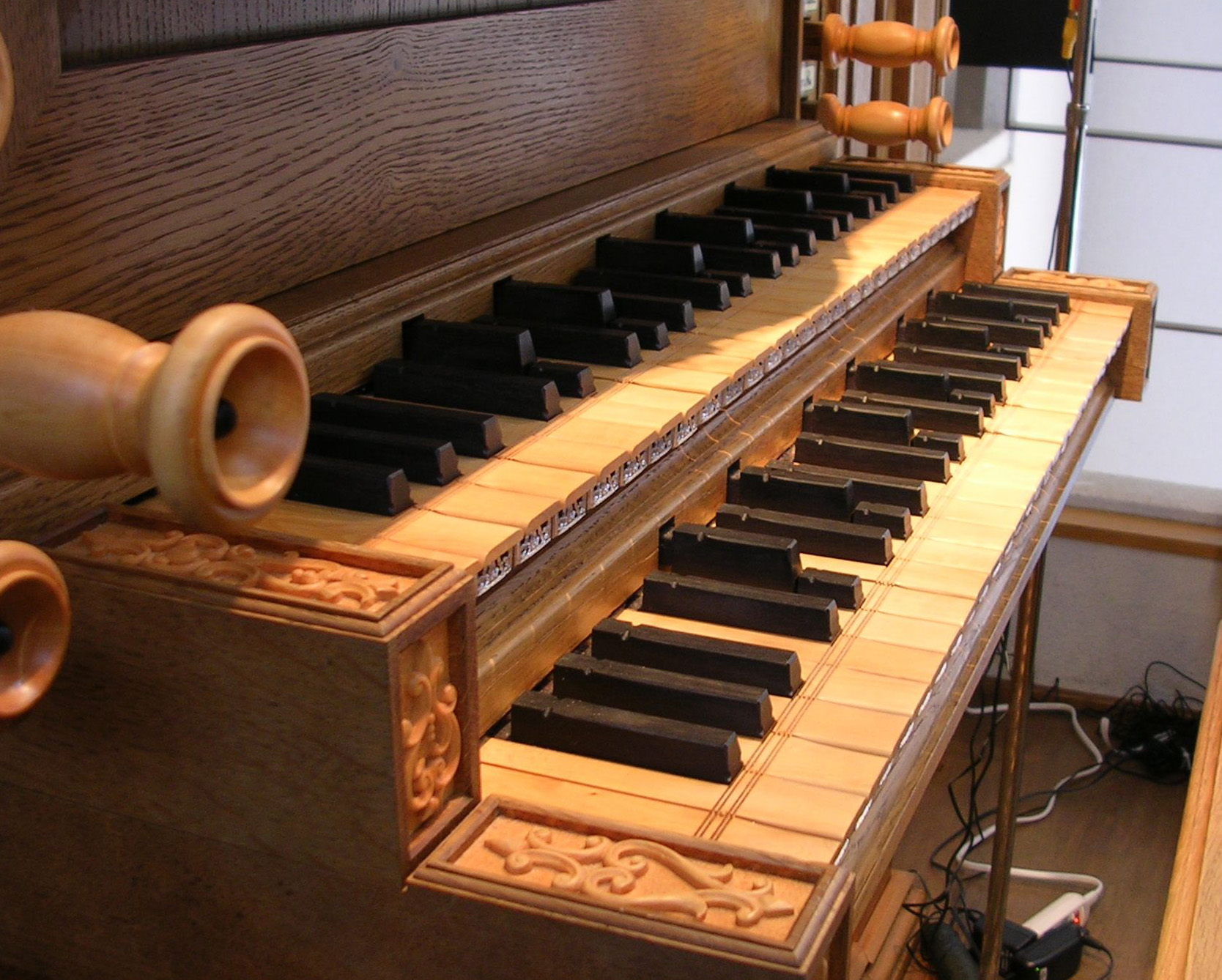
(Originally posted in March, 2010)
In the previous blog entry, I mentioned that you can characterize those temperament systems as either harmonic systems or melodic systems. The Pythagorean tuning is suited for monophonic lines because of the sharper mediants and leading tones, and thus it is a typical example of a melodic system. Not great at all for playing harmonies it is though. On the other hand, the mean-tone has just intonation major 3rds for harmonic purity; because of low mediants and leading tones, its melodic contours often suffer, but it is a harmonically pleasing temperament. The biggest problem of mean-tone is, because of the fact that twelve of those 1/4-syntonic-comma-narrowed perfect 5ths cannot close the cycle of 5ths, it has to have eleven 1/4-comma-narrowed 5ths and one regrettably-wide 5th (wolf interval) that usually falls between G#/Ab and D#/Eb; you would have to avoid the tonal keys with those pitches in them UNLESS you have the enharmonic keyboard such as the one shown in the photo above. Without the split keys, you can only cover two-flat to three-sharp keys, most likely. You’re going to need split keys for often-seen keys such as E major (4 sharps) and C minor (3 flats).
The reason I wanted to emphasize the notion of two different characters of the mean-tone and Pythagorean temperaments will be explained in the next blog entry.
Before I get to the biggest point of those temperament discussions, let’s review another ‘comma’ that we often talk about. Now you know that the Pythagorean tuning is about stacking up pure perfect 5ths for 12 times to cover all 12 pitches in the cycle of 5ths. But you also know that a pure perfect 5th is wider than the equal temperament 5th, right?
Equal temperament Perfect 5th = 7 semitones at 100 cents each = 700 cents
Pythagorean Perfect 5th = log (3:2) x 1200 ÷ log (2) = 701.955 cents
This difference (1.955 cents) x the whole cycle of 5ths (12 fifths) = 23.46 cents
Tada!! This is the Pythagorean comma. What we commonly use in period ensemble situations is a 1/6-Pythagorean-comma system; we simply make 6 out of 12 fifths in the cycle narrower by a sixth of the comma to ascertain that the beginning C and the ending C of the cycle are in perfect unison (1:1 ratio). One system, commonly known as the Young temperament, makes those 5ths on the right side of the cycle (split right down the middle, assuming that it’s a clock-wise circle from the C at the top) narrow by a 1/6 comma each, and leaves the 5ths on the left side of the circle pure. Another system known as the Vallotti temperament is almost the same as the Young, but Vallotti narrows the 5ths in the 11 o’clock to 5 o’clock part of the cycle; in other words, in Vallotti all white-keyed notes on the piano keyboard are from 1/6-comma-narrowed 5ths… right, it means that C major and A minor are the most harmonically optimized key in Vallotti (G/e in Young). Does that mean F-sharp major and E-flat minor are terrible in the Vallotti temperament? There are some 1/6-comma mean-tone advocators out there, and one of them is saying that he even hates the Vallotti (though he admits it is an attention-grabbing overstatement!)… What’s the deal there!?
Stay tuned!

Like any temperament sixth comma tuning can be fiddled d’ apres Vallotti. But the best well temperaments are irregular. Dr. Lehman’s version is as good as any. No temperament is perfect not even ET.